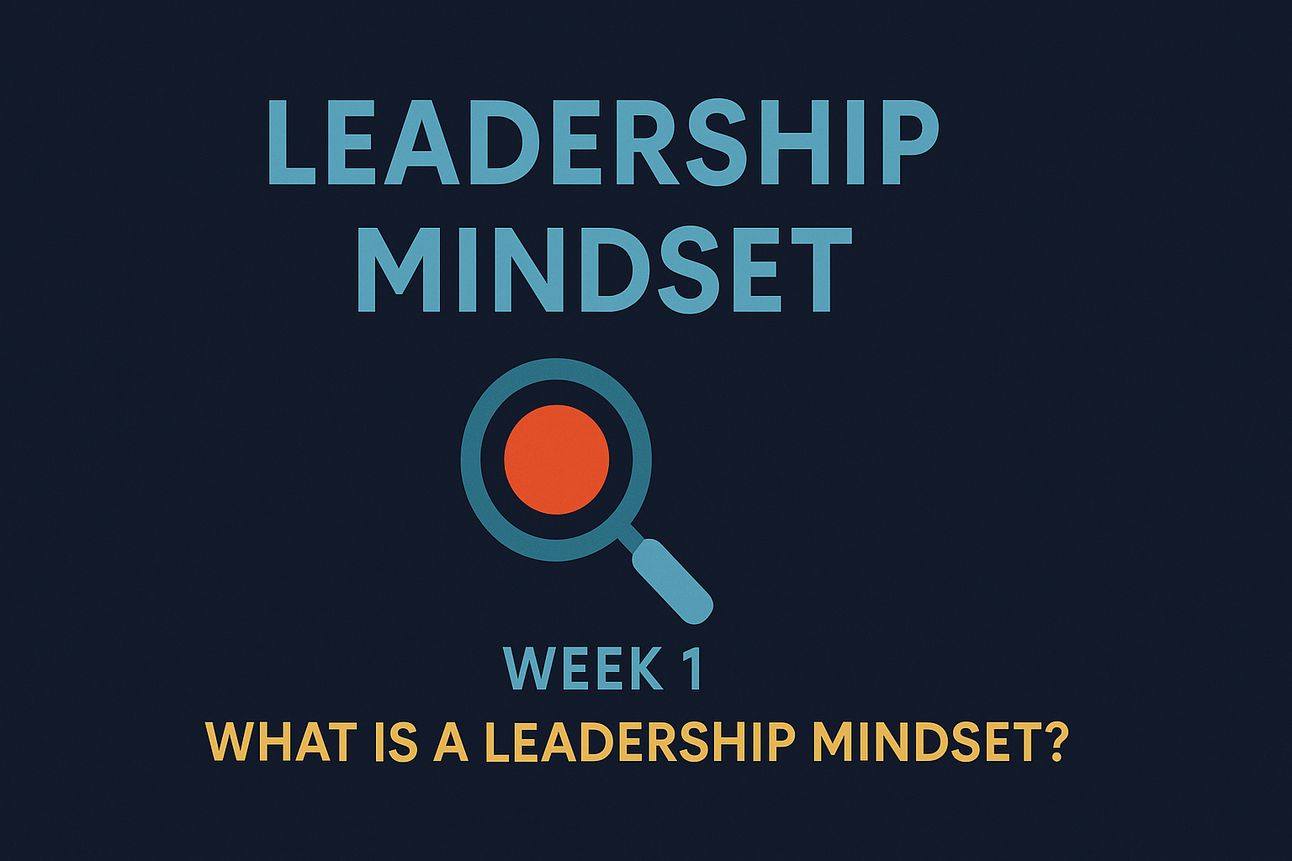Welcome!
I’m excited to get this kicked off, as this is the area I’m most passionate about. I love helping leaders find their natural fit within their organization, learning how to leverage their unique skills to deliver value and show their influence across the organization.
Be sure to check out the archives for our last series on Emotional Intelligence, along with dozens of other issues from earlier in the year.
What is a Leadership Mindset
A leadership mindset is the ability to recognize and understand how your specific leadership position adds value and contributes to the larger business plan.
This information is essential for becoming an invaluable leader and driving growth in yourself and your team. Maximizing your contributions to your organization is how you get noticed, and this series is designed to help you enhance your influence as a leader within your organization.
The best leaders know their boundaries and how to operate within those boundaries to deliver value for their organization. Not everyone has the authority to make policy changes, but you can impact how your team adheres to and views corporate policy. Your job is to learn how to maximize your value at your current leadership level.
I’ve learned a great deal about my own leadership style and worldview over the past 10 years, through my military experience, education, and on-the-job experience. The most important thing I’ve learned is how to ensure my views align with the organization I work in.
Leadership Levels
There are many ways to calibrate leadership across organizations, but we’re focusing on three primary levels that apply to every organization. You may fall into more than one category, but try to focus on the one that fits the largest percentage of work you do each day.
Individual Contributors: hands-on work done for an internal or external customer. This level focuses on completing tasks that directly add value to customers.
Front-line Leaders: supervising, training, and adjusting the tasks and processes used to help front-line employees complete the work. This level is focused on enhancing the abilities of individual contributors or enhancing the environment they work within.
Leaders of Leaders: enhancing system efficiency by creating, monitoring, and adjusting key business functions. This level focuses on training and developing leaders (who develop front-line employees) while providing them with the necessary systems to achieve success with the people on their team.
There’s a lot more that we could discuss at each level, and we will over the next four weeks.
For now, it’s important to know that each of these levels has:
An area of focus that adds value to the organization.
A set of skills used to complete the expected tasks.
A span of problem-solving authority and ability.
A relationship with time, both personal and organizational.
Each of these four areas will change at each leadership level. Understanding your level and how you add value to your organization is crucial for developing a leadership mindset that enables you to maximize your influence within it.
What got you here…
Won’t get you there. That’s the title of a famous book by Marshall Goldsmith that explains how success in one role is not the same as success in another.
You’ve probably also heard of The Peter Principle, which states that an individual is promoted to their level of incompetence. This means you succeed, get promoted, succeed again, get promoted, then fizzle out.
This happens because organizations fail to separate current success and future potential.
The way you solve problems, make decisions, and manage your time varies significantly at each leadership level. The decision-making criteria used by a front-line leader are different from those of a leader of leaders.
There’s a lot of neuroscience & psychology that explain why it’s so hard to change your mindset when you get promoted, and we’re going to explore that in the next four issues through the lens of skills, area of focus, problem-solving, and time.
Summary
Now that we’ve identified what a leadership mindset is, the four parts of a leadership mindset, and the levels we will explore over the next four weeks, we can focus on examining each of the four parts in greater detail.
Next week we’ll be covering the area of focus for the three leadership levels. In essence, how can you add value that is unique and meaningful within your organization?
Let me know if you have any questions about what a leadership mindset entails or if you're struggling to maximize your impact within your organization. I’ll be answering the questions as we move through the series. I already have a few questions, but I’d love to get some more feedback!
Feel free to share this link or forward this email if you think someone else would enjoy it!
